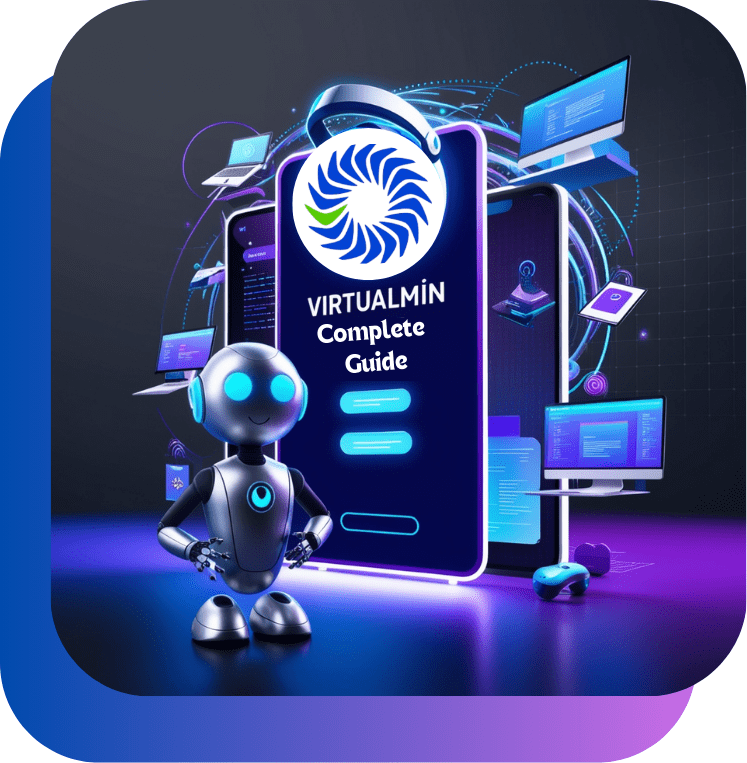Virtualmin is a web hosting control panel designed for managing websites, applications, and server resources. It originated as a module for Webmin, a popular open-source web-based interface for system administration. Developed by Virtualmin, Inc., it was first introduced in the early 2000s to simplify server management by integrating website hosting capabilities with Webmin’s extensive system control features.
The platform evolved to offer advanced tools for virtual hosting, providing compatibility with multiple operating systems, including Linux and BSD. Virtualmin gained popularity for its flexibility, allowing users to manage domains, email accounts, databases, and SSL certificates through an intuitive interface.
Over time, the developers expanded its features, including support for multiple scripting languages, automated backups, and cloud integration. The platform’s open-source version, Virtualmin GPL, complemented its paid version, Virtualmin Professional, ensuring accessibility for individuals and enterprises. Today, Virtualmin remains a widely used tool for efficient server and website management.
How to Download and Install Virtualmin

Virtualmin is a robust and popular web hosting control panel that helps you manage multiple domains, websites, databases, and email accounts from a single interface. It’s known for its flexibility and user-friendliness, making it a great choice for system administrators and hosting professionals. In this guide, you’ll learn how to download and install Virtualmin step by step.
Step 1: Prepare Your System
Before downloading Virtualmin, ensure your system meets the basic requirements:
Supported Operating Systems:
Virtualmin supports a variety of Linux distributions, including:
- CentOS (7 and 8)
- Ubuntu (20.04, 22.04)
- Debian (10, 11)
Ensure your server is running a supported version of one of these distributions.
System Requirements:
- Minimum RAM: 1GB (2GB recommended for better performance)
- Disk Space: At least 5GB free for installation
- Root Access: You’ll need root access to your server.
Update Your Server:
Run the following commands to update your system:
sudo apt update && sudo apt upgrade -y
or
sudo yum update -yStep 2: Download the Virtualmin Installation Script
Virtualmin offers an automated installation script to make the setup process straightforward.
Access the Official Virtualmin Website
Go to the Virtualmin official website. Navigate to the Downloads section to access the latest installer script.
Download the Installation Script
Log into your server via SSH as the root user or a user with sudo privileges and download the installer script using the wget command:
wget http://software.virtualmin.com/gpl/scripts/install.sh
This script is designed to install Virtualmin with its default settings and configurations.
Step 3: Verify the Installation Script
For security purposes, it’s a good idea to verify the script’s integrity. Check the script’s signature or hash from the Virtualmin website and compare it with the downloaded file.
Step 4: Run the Installer Script
Make the script executable:
chmod +x install.sh
Run the script with root privileges:
sudo ./install.shThe script will prompt you for basic information and configure your server. Choose the options that match your needs.
Step 5: Wait for the Installation to Complete
The script will install Virtualmin along with necessary software packages such as:
- Apache/Nginx
- MySQL/MariaDB
- PHP
- Postfix
This process may take several minutes, depending on your server’s speed and configuration.
Step 6: Access Virtualmin
After the installation is complete, access the Virtualmin control panel using a web browser.
- Open your browser and enter your server’s IP address followed by port
10000. For example:https://your-server-ip:10000 - Log in with your root credentials or the user you configured during installation.
Step 7: Complete the Post-Installation Wizard
Virtualmin will guide you through a post-installation wizard to optimize settings based on your server’s resources and your hosting requirements.
Step 8: Start Using Virtualmin
Once the setup is complete, you can:
- Create and manage virtual servers.
- Configure DNS settings.
- Manage databases, email accounts, and more.
Downloading and installing Virtualmin for development purpose is a straightforward process, thanks to its automated script and intuitive design. With Virtualmin installed, you’ll have a powerful tool to manage your web hosting environment efficiently. For additional customization or troubleshooting, refer to the official Virtualmin documentation.
Features of Virtualmin
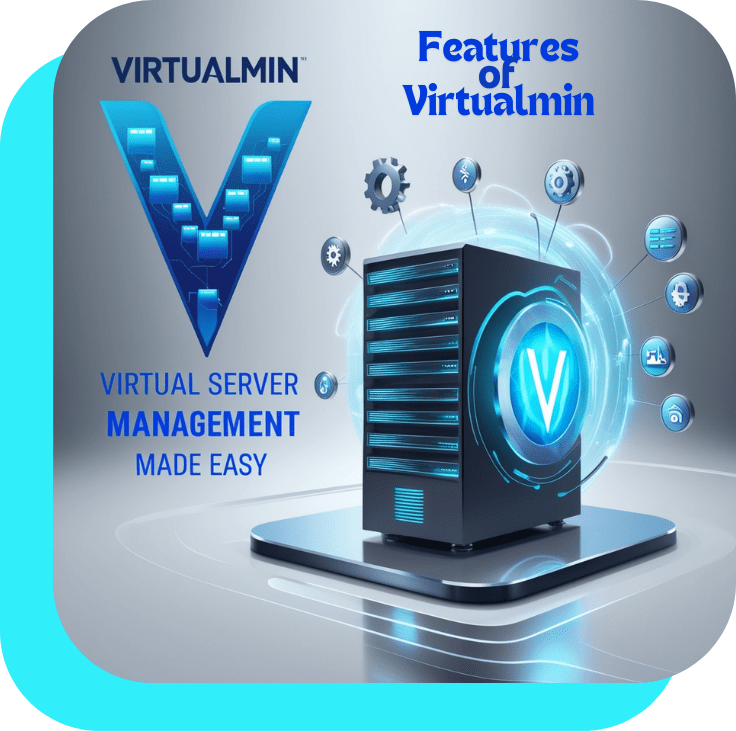
Domain Management
Virtualmin allows users to manage multiple domains, each with independent settings for web hosting, email, and databases.
Email Management
The platform simplifies the creation and management of email accounts, spam filters, and autoresponders.
Database Management
With support for MySQL and PostgreSQL, Virtualmin enables easy database creation, backups, and user management.
Security Features
Virtualmin integrates security tools such as fail2ban, SSL certificate management, and user access controls to enhance server protection.
Backup and Restore
Automated backup scheduling and restoration features ensure data integrity and disaster recovery capabilities.
Configuring Virtualmin
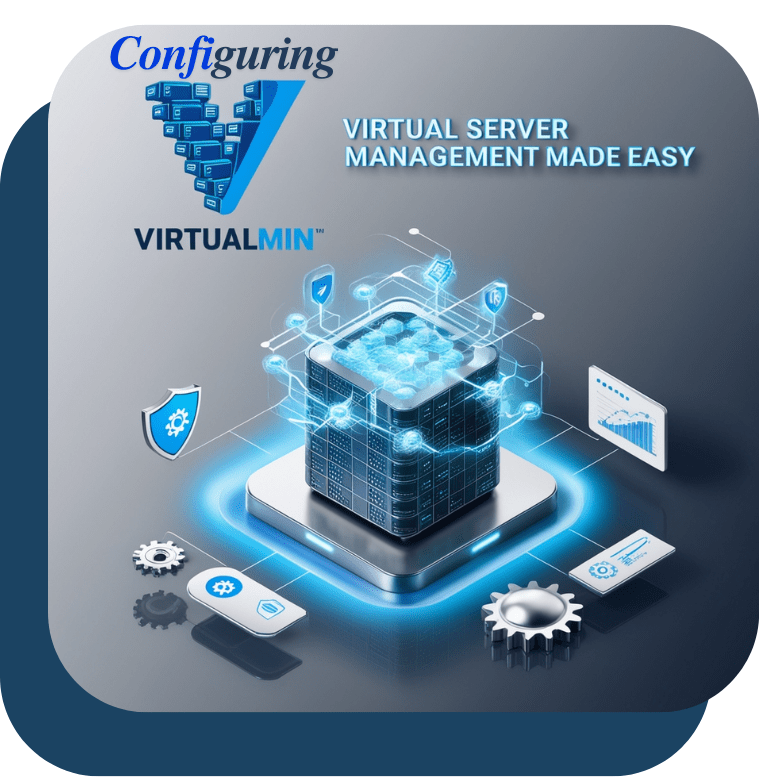
Setting Up Domains
To configure a domain:
- Navigate to the “Create Virtual Server” section.
- Enter the domain name, admin username, and password.
- Customize settings such as quotas, mail configurations, and web options.
Email Configuration
Enable email services for your domain through the “Email Settings” section. Configure spam filtering and specify mail delivery methods.
Customizing Web Server Settings
Virtualmin supports Apache and NGINX. Configure web server options under the “Server Configuration” menu to optimize performance.
Securing Your Server
Activate SSL for your domains using the “SSL Certificate” section. Regularly update the server and enable firewall protections.
Using Virtualmin
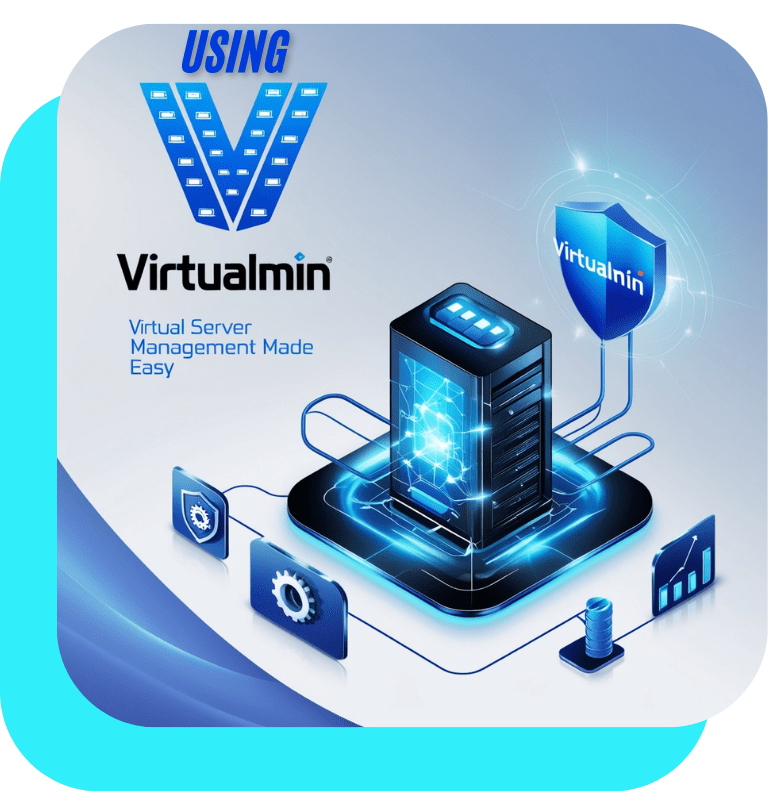
Managing Virtual Servers
View and manage all virtual servers from the “Virtual Server” menu. Perform actions like enabling/disabling features, updating quotas, and managing server logs.
Monitoring System Performance
Access performance metrics such as CPU usage, memory allocation, and disk space through the “System Information” panel.
Customizing User Roles
Create and manage user roles to control access permissions for server administrators and clients.
Troubleshooting in Virtualmin

Common Issues and Solutions
- Failed Installations: Check system requirements and ensure all dependencies are installed.
- Email Delivery Problems: Verify DNS settings and spam filter configurations.
- Website Downtime: Monitor server logs and restart web services if necessary.
Accessing Logs
Use the “Logs and Reports” section to diagnose issues. Common logs include error logs, access logs, and mail logs.
Best Practices for Virtualmin
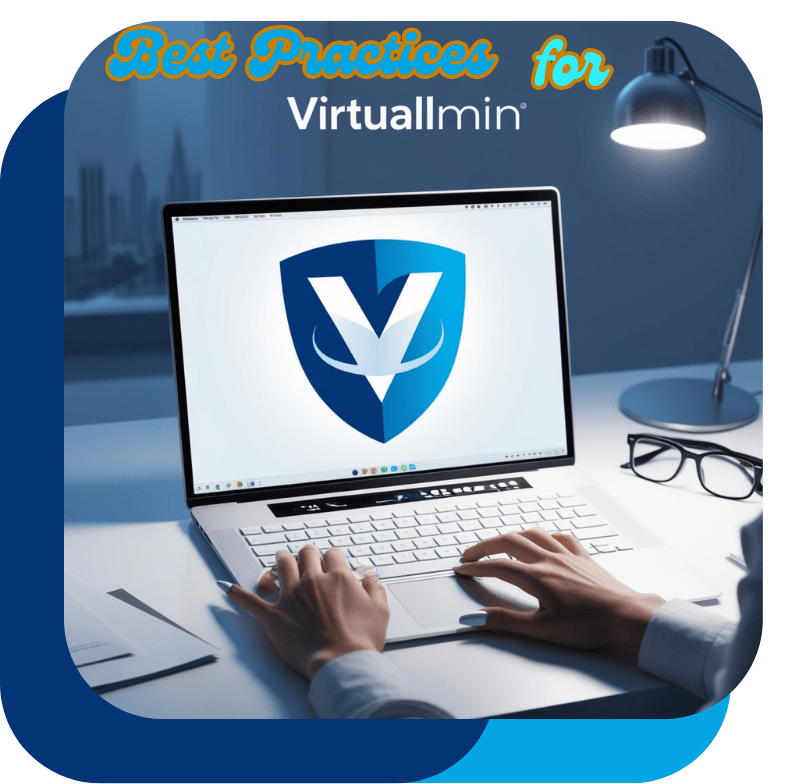
Regular Backups
Schedule daily or weekly backups to safeguard data and configurations.
Update and Maintenance
Keep Virtualmin, Webmin, and all server software updated to the latest versions.
User Access Management
Restrict user access to critical configurations and monitor login activities.
Guide to the Virtualmin Shop

The Virtualmin Shop is a one-stop destination for purchasing licenses, plugins, and professional services to enhance your Virtualmin experience. Virtualmin is a powerful web hosting control panel designed for managing domains, websites, and server configurations, and the shop complements it by offering solutions tailored to diverse hosting needs.
Introduction to the Virtualmin Shop
The Virtualmin Shop serves as an official marketplace where users can buy products and services to extend the functionality of Virtualmin. Whether you’re a hosting provider, developer, or server administrator, the shop offers valuable resources to optimize server management.
Products and Services Available
Virtualmin Licenses
The backbone of the Virtualmin Shop is its license offerings. Virtualmin offers two main versions:
- Virtualmin GPL: The free and open-source edition.
- Virtualmin Pro: The premium version with advanced features such as resellers, premium plugins, and better scalability.
Purchasing a Virtualmin Pro license provides access to premium support, additional software repositories, and a suite of tools for improved performance and customization.
Cloudmin for Cloud Management
Cloudmin, a sibling product to Virtualmin, is available for managing virtualized systems like Xen, KVM, and OpenVZ. Licenses for Cloudmin can also be purchased via the Virtualmin Shop, enabling users to integrate cloud management with their hosting environment.
Plugins for Enhanced Functionality
The shop offers various plugins to boost Virtualmin’s capabilities. Popular options include advanced monitoring tools, enhanced backup solutions, and third-party software integrations. These plugins help users streamline their server management tasks and improve system performance.
Professional Support Services
Virtualmin Shop also provides professional support options for users requiring expert assistance. From installation to troubleshooting complex server issues, the support packages cater to a variety of needs, ensuring a seamless Virtualmin experience.
Benefits of Using the Virtualmin Shop
Simplified Licensing
The Virtualmin Shop makes it easy to purchase, manage, and renew licenses. Users can select license types and terms based on their needs, ensuring they only pay for what they use.
Exclusive Plugins
Some plugins available in the shop are exclusively designed for Virtualmin Pro users, offering advanced features that aren’t accessible in the free version.
Reliable Support
Access to professional support services through the shop ensures users can resolve issues efficiently, minimizing downtime and maintaining high-quality hosting services.
How to Access the Virtualmin Shop
To access the Virtualmin Shop:
- Visit the official Virtualmin website.
- Navigate to the “Shop” or “Purchase” section.
- Browse the available licenses, plugins, and services.
After selecting your desired product, follow the checkout process to complete your purchase. Once completed, you will receive instructions to activate or download your purchase.
Integrating Purchased Products
After purchasing a license or plugin, integrating it with your Virtualmin setup is straightforward.
- For licenses, enter the provided key into the Virtualmin dashboard to unlock premium features.
- For plugins, download and install them via the Virtualmin interface or manually upload them to your server.
- For professional services, communicate with the Virtualmin support team to schedule and implement the services.
Professional Features of Virtualmin

Virtualmin professional version offers an array of advanced features that cater to both small-scale businesses and enterprise-level hosting needs. In this guide, we explore the professional features of Virtualmin, highlighting how they enhance functionality, security, and ease of use.
Comprehensive Domain Management
Virtualmin Professional excels in managing multiple domains from a single interface. Users can create, edit, and delete domains seamlessly, with support for virtual servers and subdomains. The intuitive interface allows administrators to assign unique configurations to each domain, ensuring flexibility for different hosting needs.
Advanced DNS Configuration
The professional version includes powerful DNS management capabilities. Administrators can configure DNS zones, set up custom records, and integrate with external DNS services. This feature is crucial for maintaining domain reliability and optimizing performance across global networks.
Enhanced Security Tools
Security is a cornerstone of Virtualmin Professional. It includes features to ensure the safety of server environments and user data.
SSL Certificate Management
Virtualmin Professional simplifies the installation and renewal of SSL certificates. It supports Let’s Encrypt for free, automated SSL provisioning and provides options for importing or purchasing third-party certificates. This ensures secure communications across all hosted sites.
Two-Factor Authentication
To bolster server access security, Virtualmin Professional integrates two-factor authentication (2FA). This adds an extra layer of protection by requiring users to verify their identities using an external device or application.
Robust Email Management
Email hosting is a crucial feature for any web hosting panel. Virtualmin Professional provides advanced email management tools that cater to diverse business needs.
Email Server Configuration
The professional version supports popular mail servers like Postfix and Dovecot, offering customizable email services for domains. Administrators can set up email accounts, aliases, and forwarding rules with ease.
Spam and Virus Filtering
Integrated anti-spam and anti-virus systems, including SpamAssassin and ClamAV, ensure that email services are secure and reliable. Users can customize spam filters to meet specific organizational policies.
Database Management
Virtualmin Professional supports database servers such as MySQL and PostgreSQL. Its interface enables administrators to create, manage, and back up databases efficiently. Advanced database management options allow seamless integration with web applications.
Application Deployment
The professional version simplifies application deployment by offering a one-click installer for popular software like WordPress, Joomla, and Magento. This reduces setup time and ensures proper configuration for web applications.
Performance Optimization
Virtualmin Professional is designed to deliver high performance, even under heavy workloads.
Resource Monitoring
The integrated monitoring tools provide real-time insights into server performance metrics, including CPU usage, memory allocation, and disk space. Administrators can identify bottlenecks and optimize resources proactively.
Load Balancing and Clustering
For enterprise users, Virtualmin Professional supports load balancing and clustering. These features distribute workloads across multiple servers, ensuring optimal performance and redundancy.
Backup and Disaster Recovery
Data integrity and recovery are critical for any hosting environment. Virtualmin Professional includes advanced backup options that allow administrators to schedule regular backups and restore them effortlessly. The system supports local backups and remote storage solutions like Amazon S3.
Automation and Customization
Automation tools are a hallmark of Virtualmin Professional, making server management more efficient.
Scheduled Jobs
Administrators can automate routine tasks like updates, backups, and cleanups using the built-in scheduler. This reduces manual effort and minimizes downtime.
API and Command-Line Interface
The professional version provides robust API and CLI support, enabling developers to integrate Virtualmin functionalities into their workflows. This ensures seamless customization and automation of server operations.
User-Friendly Interface
Virtualmin Professional’s interface is designed for usability. The clean and intuitive dashboard provides quick access to essential features, reducing the learning curve for new users. It also supports multi-language options, catering to a global user base.
Final Thoughts
Virtualmin is a highly capable, feature-rich web hosting control panel that can cater to a wide range of hosting needs, from small-scale personal projects to large-scale server management. Its open-source nature, combined with the availability of a premium version for enhanced support, makes it a flexible and scalable solution for anyone in the web hosting and server management industry.
If you’re considering Virtualmin for your server management needs, it’s important to evaluate your specific requirements, including the scale of your hosting, the types of domains and services you will manage, and your expertise in managing server environments.
In conclusion, Virtualmin stands out as a powerful, customizable, and secure web hosting control panel that can simplify server management for both beginners and professionals. Whether you choose the free or premium version, it remains a top choice for anyone seeking a reliable and robust control panel for web hosting management.
FAQ’s
What is the difference between Webmin and Virtualmin?
What are the minimum requirements for Virtualmin?
The minimum required RAM is 512 MB, but this requires that you configure Virtualmin to its basic setup and sacrifice a lot of features that use RAM. This is why we recommend having 2 GB RAM for a single website and 4 GB RAM for multiple websites. A Minimum of 1 GB of free disk space for the installation.
How do I start Virtualmin?
Enter the Virtualmin URL
In the address bar, type the URL to access Virtualmin. This will usually be your server’s IP address or domain name followed by the port number 10000. For example: https://your-server-ip:10000 or https://yourdomain.com:10000
How do I download Virtualmin?
- Install your Operating System. Start with a freshly installed, Grade A supported Operating System on your server or VPS. …
- Download the Virtualmin Install Script.
- Run the Install Script and Configure Virtualmin.
- Check the Docs.
- Sign Up For Announcements.
What is Virtualmin used for?
Virtualmin is a domain hosting and website control panel which gives the ability to create and manage many domains, as well as simplify both automation and tasks. It is based on Webmin. Virtualmin is an alternative to cPanel and Plesk.
